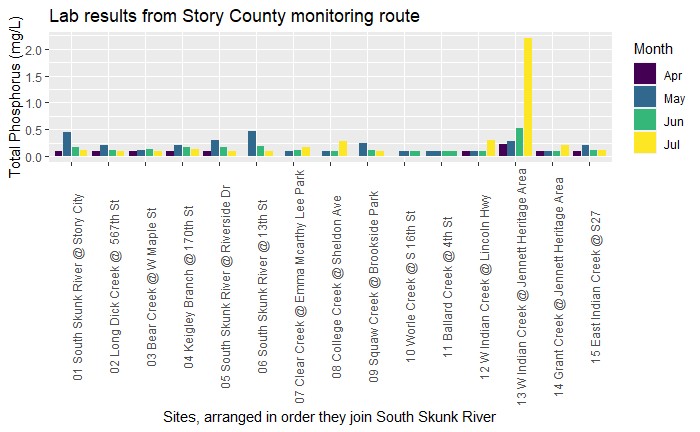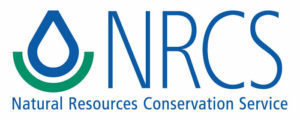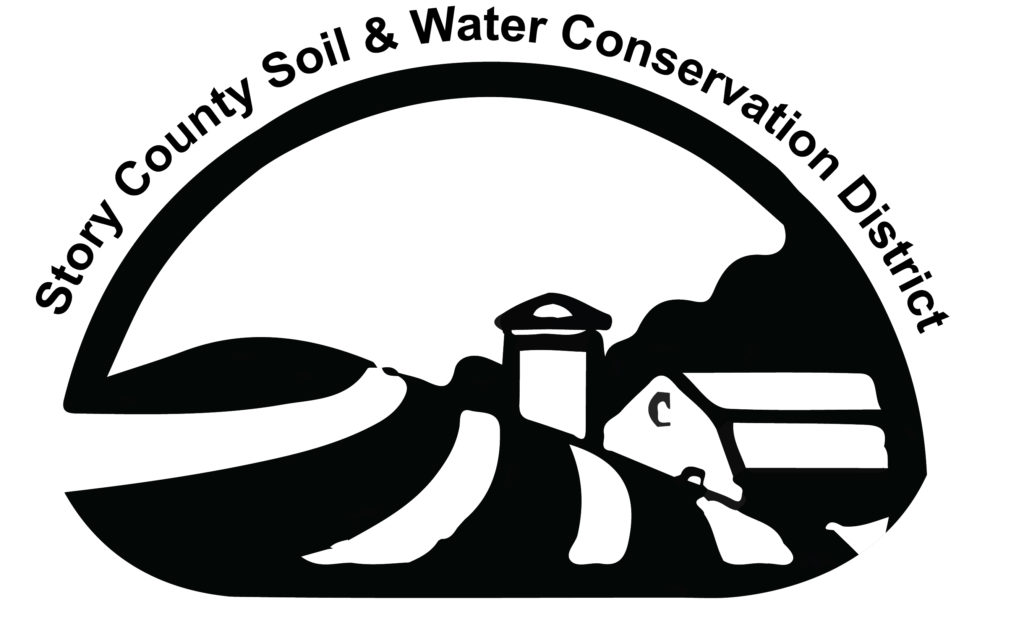A Note from the Watershed Coordinator
by David Stein
Thank you all for joining us for the Watersheds and Waterways newsletter. This year has been filled with new challenges, but also several successes. The Watershed team’s work on the National Fish and Wildlife Foundation grant has continued to produce several great results for conservation here in Central Iowa. Our pollinator flyways and seed bank systems have gone through a major change, now known as the Nectar Network, this program rolls in all of the previous pollinator and wildlife work into one organized program. The Nectar Network officially launched this month with some fundraising efforts. In the meantime, we have been hard at work mapping endangered pollinator sightings in the state and visualizing where in Central Iowa, restoration efforts are most needed.
The Prairie Rivers Watersheds and Waterways team continue to do an excellent job with community outreach, albeit with a virtual twist. Between zoom calls with partners, zoom calls with planning groups, and zoom calls with conservation districts, it seems like we’re just zooming around all over the place! But through the wonders of modern technology, we were able to complete our first field day through a Zoom Meeting with our partners at the Story County Soil and Water Conservation District and Iowa Learning Farms in June. Looking ahead, we have the Wild and Scenic “Live Virtual” Film Festival Festival sponsored by Prairie Rivers on October 2 from 7:30 to 9 pm. Three of the ten films presented deal directly with water quality issues and solutions. Finally, our second field day will again be virtual as well and will be centered around pollinator/wildlife habitat and the seed bank.
The best way to stay informed on events is to follow and keep in touch with Prairie Rivers of Iowa on social media and through our new and improved website. Our Facebook, Twitter, and Instagram are always updated with great information about events and important topics. Thank you all again, and please enjoy our newest newsletter.
Story County Stream Monitoring Heats Up
by Watershed Educator Dan Haug
This summer we’ve been testing more Story County streams than ever and introducing new ways to make sense of the data.
If you see a car stopped by a bridge in Story County pulling up a milk jug of water on a rope, there’s a good chance it’s me or volunteer Rick Dietz, doing our monthly monitoring route. We collect water samples from 10 sites, and the City of Ames staff covers another five. Laboratory Services for City of Ames Water and Pollution Control tests the samples for nitrate, total phosphorus, total suspended solids, E. coli bacteria, and fecal coliform.
The support of a certified lab provides a backstop for volunteer monitoring and allows us to make direct comparisons with data collected from larger rivers by the Iowa DNR. It also allows us to test for E. coli bacteria, which have exceeded the recreational standard in every stream we’ve tested.
The most surprising result so far is the high phosphorus levels in West Indian Creek. Phosphorus is a nutrient that contributes to algae blooms. Phosphorus and E. coli increase between Lincoln Highway (where the creek enters Nevada) and Jennett Heritage Area (about 5 miles downstream), so there’s a good chance that treated wastewater or untreated stormwater from the city could be a source. Fortunately, the City of Nevada has projects underway that could help clean it up. Nevada will be constructing a new wastewater treatment plant starting in 2022. That opened up a grant opportunity (an SRF sponsored project) that could pay for bank stabilization or stormwater treatment projects in and around town. We’re happy to be included in the conversation and to provide water monitoring data that can strengthen the City’s grant application.
The graph above was produced with “R”, a free open-source software package for statistics and data science. We like the idea that our work will be transparent and repeatable. Doing an analysis for the first time is difficult (a bit like computer programming) but doing an analysis for the second time (with more recent data, a different site, or a different pollutant) is ten times faster, and there are many options for sharing the data, which we’re just beginning to explore.
View more results from 2020 water monitoring here.
Prairie Rivers of Iowa and Story County Officials
Organizing Water Quality Monitoring Effort
Story County leaders are beginning to develop a ten-year water quality monitoring program for the county. The program will be the first of its kind in Iowa in which a county, its jurisdictions and supporting organizations have worked together to create such a planning document. The Ames based nonprofit Prairie Rivers of Iowa has organized and is facilitating the effort with planning team representing members from Story County, City of Ames, City of Gilbert, City of Huxley, City of Nevada, Leopold Center for Sustainable Agriculture, Izaak Walton League and the Story County Community Foundation. …read more
A More Complete Picture of Water Quality Concerns
by Watershed Educator Dan Haug
When the Iowa DNR submitted its 2018 report to the EPA in February regarding the status of Iowa’s waters, it contained two amendments. In response to our public comments, Squaw Creek and East Indian Creek were added to Waters In Need of Further Investigation or potentially impaired streams. It’s a change that will have no effect on permits or grant funding, but it’s a small victory for education.
Now when you view entries for those streams on DNR’s database, instead of saying “Not Assessed” there’s a mention of the data that PRI, City of Ames, and Story County helped collect and a warning that these streams may not fully support recreation. E. coli bacteria is an indicator of fecal contamination, something we’d rather not have in the waters where we canoe or our children play. In 2016, seasonal averages for Squaw Creek measured 1,825 colonies per 100mL and East Indian Creek measured 1,234 colonies. That’s 5 times higher than the South Skunk River in that same year, and well above the primary contact recreation standard of 126.
We think it’s important to share this information not to alarm people but to give them context. It’s a mistake to pay too much attention to the red lines on a map when some of the adjacent blue lines have even worse water quality. Whether that information motivates you to stay out of the water or just pack a bottle of hand sanitizer when you go canoeing, to pick up after your dog, keep your cows out of the stream, or call your legislator, we think those decisions can be made better when you have a more complete picture.
Penny Brown Huber
Executive Director
pbrownhuber@prrcd.org
David Stein
Watershed Coordinator
dstein@prrcd.org
Dan Haug
Watershed Educator
dhaug@prrcd.org
Mike Kellner
PR & Marketing Coordinator
mkellner@prrcd.org
Prairie Rivers of Iowa Watershed and Waterways Program
is Made Possible by the Following Partners















